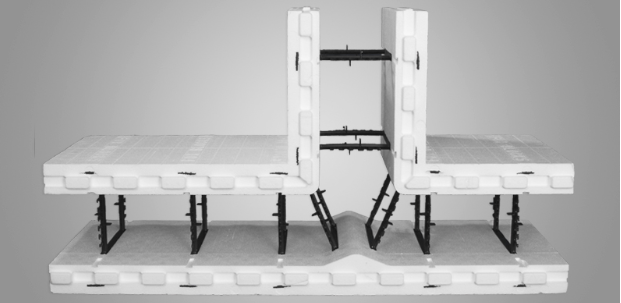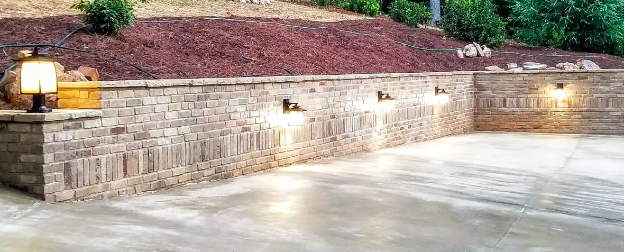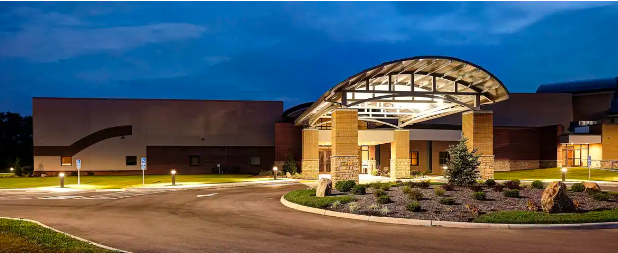
Building Stability: How to Construct Strong and Stable Structures

Creating durable structures that endure time and nature is a crucial aspect of modern construction. Ensuring stability, strength, and sturdiness involves more than material selection—it requires a grasp of construction science.
This article explores the intricacies of constructing long-lasting, environmentally resilient buildings, with insights and solutions from Fox Blocks.
Construction Stability and Resistance
Stability, strength, and sturdiness, while often used interchangeably, have distinct meanings in the context of construction.
Stability refers to a structure's ability to remain intact and unchanged in the face of external forces.
Strength is about a building's capacity to bear loads without failure.
Sturdiness, on the other hand, denotes a structure's resilience against external pressures over time.
Resistance refers to the building's ability to withstand certain elements without damage, such as weather and fire.
These qualities are achieved through a combination of thoughtful design, the right material selection, and precise construction practices.
Designing for Stability
Foundation First: Ensuring a Solid Base
A robust foundation is critical for stability, and is designed to evenly distribute loads while countering risks from ground movement or water ingress. Techniques such as deep foundations or soil stabilization can be employed based on the site's geological conditions.
Material Matters: Choosing the Right Components

Advances in materials technology have made it possible to efficiently enhance structural stability. Utilizing materials like Insulated Concrete Forms (ICFs) not only offers strength and flexibility but also contributes to sustainability. These materials are pivotal in constructing energy-efficient buildings with reduced environmental impact in order to provide a balance between cost-effectiveness and ecological responsibility.
Constructing Strong Structures: A Guide to Durability and Resilience
Ensuring building stability and strong structures requires meticulous attention to detail, the use of advanced construction techniques, and a commitment to quality control.
Let’s dive into the methods and practices that ensure the durability, resilience, and overall strength of buildings and structures.
Building for Durability: Techniques and Technologies
Durability in construction is not just about selecting the right materials; it's about employing construction methods that enhance the longevity and resilience of structures.
Modern Construction Techniques
The advent of modular building and precision engineering has revolutionized how structures are built. Modular construction allows for components to be prefabricated in a controlled environment to ensure higher quality and faster construction times.
Precision engineering, on the other hand, involves the use of detailed models and specifications to minimize errors and optimize structural integrity.
Innovative Technologies
Beyond traditional building methods, innovative technologies like Building Information Modeling (BIM) and 3D printing are becoming increasingly popular. BIM provides a digital representation of the physical and functional characteristics of a building to help facilitate better decision-making throughout the construction process. 3D printing allows for the creation of complex components with precision, to reduce waste and potentially lower costs.
Ensuring Quality Control: The Foundation of Strong Construction
Quality control plays a pivotal role in the construction process that helps to ensure that every phase of building, from design to completion, meets the highest standards of excellence.
Rigorous Testing and Inspection
From the initial stages of construction, rigorous testing of materials and ongoing inspections are crucial for building stability. Testing and inspections help ensure that all elements of the structure, from the foundation to the roofing, are up to the task of withstanding environmental stresses and loads over time.
Compliance with Standards
Adherence to local and international building standards is non-negotiable. Building standards are designed to ensure building stability, safety, durability, and efficiency in construction. Regular audits and checks during the construction process help in maintaining compliance and addressing any potential issues early on.
These practices not only guarantee the longevity of buildings, they also promote safety, sustainability, and efficiency to reflect the best in contemporary construction methodologies.
Achieving Strong Structures with Integrity: The Pillars of Sturdiness
Structural integrity, a cornerstone of modern architecture, hinges on stringent practices and the strategic layering of supportive elements that enhance building stability.
Innovative Materials for Enhanced Sturdiness: The Advantages of ICFs
The selection of materials plays a critical role in the construction of sturdy buildings. ICFs stand out as a premier choice for those seeking to combine durability with energy efficiency.
Structural Strength and Durability

ICFs are renowned for their exceptional strength, and for providing a solid framework that withstands environmental stresses and impacts. The inherent durability of ICF construction means buildings are capable of enduring for generations, with minimal maintenance requirements.
Superior Insulation and Energy Efficiency
The design of ICFs incorporates thermal insulation as a core feature, which results in significant energy savings. This enhanced insulation capacity ensures that buildings maintain consistent temperatures, which reduces the need for heating and cooling and thereby lowers energy costs.
The Multifaceted Benefits of Using ICFs
Incorporating ICFs from Fox Blocks in construction projects demonstrates a commitment to not just building stability but also a sustainable and energy-efficient future. More specifically, Fox Blocks’s ICFs stand out for their structural strength that provides a resilient framework that withstands environmental stresses with minimal maintenance.
Their integrated thermal insulation significantly reduces energy costs by maintaining consistent indoor temperatures and contributing to a healthier living environment by resisting moisture, mold, and pests. This approach aligns with sustainable construction practices, and emphasizes the reduced need for renovations and minimizes waste generation.
Why Choose Fox Blocks for Building Stability?
Fox Blocks leads in ICF technology with products designed for ease of use, exceptional durability, and environmental sustainability. Opting for Fox Blocks means investing in a future where buildings are not only safe and sturdy but also conducive to a sustainable environment. In addition, you can gain the satisfaction of knowing you have a strong structure built with fire resistant materials.
Seeing is Believing: Fox Blocks in Action

Fox Blocks efficacy is demonstrated through projects like the Showbiz Cinema in Waxahachie, Texas, and the Whitewater Crossing Christian Church in Cleves, Ohio, where ICFs have provided solutions for sound attenuation, energy efficiency, and a comfortable, sustainable environment for occupants.

Assurance in Building Stability with Fox Blocks
Choose Fox Blocks for unparalleled strength, durability, and sustainability in your next construction project. Our leading ICF technology ensures your builds are structurally sound and also energy-efficient and environmentally responsible. Experience the difference with our innovative solutions designed for the modern construction landscape.
Contact us today to partner in creating buildings that stand the test of time!